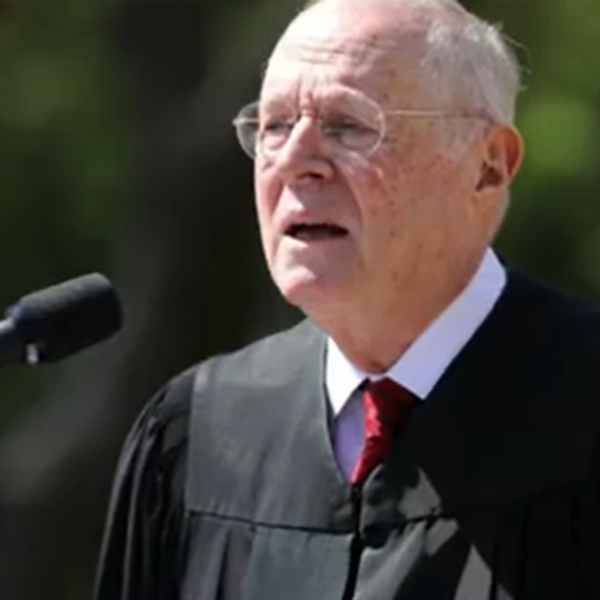Project 2025 Would Ruin Medicare And Inflate Prescription Drug Prices
Project 2025 is a comprehensive transition plan organized by right-wing think tank The Heritage Foundation to guide the next GOP presidential administration. Its lengthy guidebook, Mandate For Leadership, lays out a legislative proposal that would upend Medicare as we know it, pushing seniors onto privately run Medicare Advantage plans instead of traditional Medicare.
This proposal comes even as Medicare Advantage plans have struggled, plagued by falling stock prices, overpayment, and treatment delays. Meanwhile, Project 2025 also calls for undoing prescription drug reforms included in the Inflation Reduction Act.
The difference between traditional Medicare and Medicare Advantage
As long as Medicare and Social Security have existed, there have been right-wing pushes for privatization.
A private component — Part C of Medicare, now known as Medicare Advantage — was created as part of the Balanced Budget Act of 1997. Contemporaneous reporting shows that Democrats and the AARP disapproved of the effort to partially privatize Medicare because of the high user costs that would be associated with it.
The reason for those high costs is that Medicare Advantage allows private insurance companies to make a profit providing Medicare benefits to seniors.
AARP explains that regular Medicare has three parts: “Part A (hospital care), Part B (doctor visits, lab tests and other outpatient services) and Part D (prescription drugs).” Part C is Medicare Advantage, which is “essentially” like “joining a private insurance plan like you probably had through your employer.”
AARP says only 1 percent of doctors don't participate in Medicare, and participants don't need a referral to see doctors. Under Medicare Advantage, “you would have a primary care physician who would direct your care, meaning you would need a referral to a specialist.”
You can read more about the differences between Medicare Advantage and traditional Medicare here.
Medicare Advantage’s troubles in 2024
More people have enrolled in Medicare Advantage over the years, but as a Stat News piece earlier this year explained, there have been significant issues, with stock prices “plummeting,” researchers estimating seniors are overpaying by as much as $140 billion per year to Medicare Advantage insurers, and patients experiencing delays in receiving care due to insurance approvals.
Stat reports that many seniors “say they feel trapped in the program, tricked into joining with promises of quality care and low costs, only to find their treatments denied and bills piling up when they become ill.”
It also argues that the Medicare Advantage model “relies on providing as little care as possible in general, with insurers putting care approval behind a wall of delays and denials to save money and leaving patients suffering without necessary treatment” and says that “people across the political spectrum have begun to see the many flaws in the program,” leaving the model “in serious jeopardy.”
A Wall Street Journal report earlier this year also examined the fraught situation, and noted that companies may be pulling back on benefits in the next year due to increased demand for medical services and cuts in payments to plans:
The more challenging financial picture means companies will need to make some tough decisions about their plans next year—either sacrifice profit margins to continue growing or pull back on benefits to boost profitability. While there are other factors at play, if the current trends continue, plans will have to be more cautious in their offerings going forward.
“At this point, it looks pretty clear that next year’s reduction in benefits is really going to reduce enrollment growth,” says David Windley, an analyst at Jefferies.
Vox dove into Medicare Advantage in October 2023, highlighting how business practices of companies providing Medicare Advantage could leave seniors high and dry. It noted that one report from federal investigators showed “tens of thousands of Medicare Advantage customers were denied coverage for services they should have been entitled to.” The story of one 85-year-old woman was horrifying:
Earlier this year, STAT reported on the increasing use of AI algorithms by these plans to determine when to cut off benefits for a customer. The lead example of their reporting was an 85-year-old woman with a broken left shoulder, whose insurer followed an algorithm that said she should be ready to leave a nursing facility and return home within 17 days.
On the 17th day of her stay, the insurer said it would no longer cover the bills for her stay, even though her doctors and nurses observed that the woman was still in extreme pain and incapable of doing basic activities, such as dressing herself or going to the bathroom. It took more than a year, and a federal judge’s order, for the patient to receive payments for the three additional weeks she needed to stay in the nursing facility. Doctors shared other stories of patients who saw benefits withdrawn at the end of their life, leaving their families to fight over the leftover bills for years after their loved one had died.
Project 2025 wants to make Medicare Advantage the default option for all seniors
Given all of these serious issues, it's alarming that Project 2025's proposal is to make Medicare Advantage the “default” selection for all seniors.
Project 2025 calls for encouraging “more direct competition between Medicare Advantage and private plans" and says “critical reforms are still needed to strengthen and improve the program,” claiming that it provides a “richer set of benefits than traditional Medicare provides and at a reasonable cost.”
Helaine Olen explained the potentially disastrous consequences of these changes in an opinion piece for MSNBC:
Project 2025 recommends making Medicare Advantage — the private insurance offering in Medicare — the default option for enrollment. Currently, there is no default option, though what’s called “Original Medicare” is presented first. That may sound like a minor change, particularly if you’re not familiar with Medicare’s offerings. But this plan, should it come to fruition, will likely degrade not only Medicare, but health care for all Americans, no matter our age.
...
Medicare Advantage costs the government billions of dollars more annually than the traditional offering, while delivering less in the way of necessary care. Giant health care insurers game the Medicare system, profiting at the expense of taxpayers and patients alike. The government pays insurers a minimum fee per enrollee based on each enrollee’s health — something done to discourage companies from cherry-picking the healthy. But insurance companies do their darndest to make their enrollees appear as sick as possible to the federal government, so they can collect more money for them. As a result, the government spends more than 20% more for people enrolled in Medicare Advantage than they do the traditional program.
Project 2025 wants to roll back the federal government’s ability to negotiate lower drug prices
The Medicare section of Project 2025’s policy book also calls for rolling back reforms included in the Inflation Reduction Act of 2022 to negotiate lower prescription drug prices:
The Inflation Reduction Act (IRA) created a drug price negotiation program in Medicare that replaced the existing private-sector negotiations in Part D with government price controls for prescription drugs. These government price controls will limit access to medications and reduce patient access to new medication. This “negotiation” program should be repealed, and reforms in Part D that will have meaningful impact for seniors should be pursued.
We learned more about the first group of drugs subject to this negotiation in August, which include the blood thinners Eliquis and Xarelto; diabetes treatments Jardiance and Januvia; autoimmune disease treatments Enbrel and Entresto; diabetes/heart failure treatment Farxiga; blood cancer treatment Imbruvica; psoriasis/inflammatory disorder treatment Stelara; and the insulin Fiasp.
This program has been the target of MAGA media figures like Fox News host Mark Levin, who has absurdly claimed that people who really need drugs can get them for free.
A Center for American Progress analysis has found that as many as 18.5 million people could see higher drug costs as a result of Project 2025’s plan.
Reprinted with permission from Media Matters.











